Audiophile ethernet cables. Most would laugh or vomit when they hear those three words. I firmly believe it’s one of the biggest bottleneck for many networked rigs out there. Naysayers would be believers if they just take two cheap ethernet cables from different brands and just give it a listen. If you aren’t a complete neophyte to high-end audio, you’ll know that quantitative measurements could only go so far. I honestly wouldn’t even know how I would go about measuring the width of soundstage or the clarity of a piece of equipment. Nothing could replace experience. Trust your ears fool. Quoting myself here:
Trust me, I was dumbfounded and skeptical when I heard ethernet cables made a difference in audio quality. It’s over a reliable TCP/IP connection where the bits are error-checked. Presumably the bits should be exactly the same on both ends. Well, apparently there’s EMI/RFI that could envelope the path of the cable and generate a sonic variance in the equipment connected on both ends.
Unlike transferring a file via FTP or downloading an app, which could take a variable amount of time, music needs to be clocked at a certain pace at all times. Most streaming occurs with the UDP/IP protocol where bits aren’t error-checked or resent. Audio streams aren’t just about the bits but the timing of the departure and arrival of those bits. Due to the physical connection of the sender/receiver and the cable design itself, jitter/RFI/EMI could emanate in the chain from the cable. The buffer that puts the stream of bits back together on the ethernet endpoints also plays a more important role. So the clocks, shielding, material, source/DAC hardware, and overall the engineering of the cable could unequivocally affect the sound quality of a cable. It does this by improving waveform fidelity, reducing impedance variations at the cable/connector, and thus lowering the overall noise.
I told myself I wouldn’t spend more than $10 on an ethernet cable. I used to just build them myself and 1,000 ft was only $40. For the love of audio, that all changed. I tried the SOtM dCBL-CAT6 and was blown away once I heard how much more musical my recordings were. For that, I paid $200 for 1.5 meters. Well…worth…it.
So if you’ve been reading this blog, you’ll know I’m a mad scientist when it comes to some of this stuff. Since we’re streaming from our NAS and from the internet these days, I wanted to test how much of an impact ethernet cables make in the entire chain. There were my findings:
- If you’re streaming most of your library from online services such as Tidal, Spotify, etc, use the highest quality cable you can from the modem to the router. If you use a cheap cable, your music will sound flatter than it should and lose extension both ways. It adds a few layers of greyness the sound. It becomes fuzzy and it loses energy. I was quite appalled when I heard it.
- If you’re streaming from a NAS, try your best to avoid using a wireless bridge. Each bridge will sound different and wireless signals reduce the extension of your recordings. I have a few wireless bridges here and will test them out at a later time. Not everyone, including myself, have the luxury of having walled ethernet or the modem/router in our listening rooms.
- If you’re listening to mostly local files, use your best cable at the source (Your NAS, transport, etc). If you’re bridging your sMS-200 with your Roon server, use your best cable there. I still experimenting with a few cables and setups so I’ll update this post with my findings. They’ve been interesting so far. I wouldn’t be surprised if you get better fidelity from using the highest quality cable at the end of the chain, but in my setup, it sounded like the cable was putting a band-aid on music that has already been molested.
- Everyone’s setup is different and I would suggest you try cables in various locations and see what you like. Generally, the acoustic traits of the cable closest to the source takes precedence.
I didn’t really want to listen to the SOtM dCBL-CAT7 (standard). I didn’t think it could improve on what the dCBL-CAT6 did sonically. I was already “content.” Oh the sound of my fleeting heart. Secondly, $500 for an ethernet cable is a bit insane. SOtM sent me their cable anyway and I frankly was reluctantly to try it. I wanted to dismiss it as “It’s better but not $300 better.” Well, I’m wrong yet again. This cable improved the sound from my listening rig at least fivefold. It was a big deal.
If you’re wondering what that cute little block is:
The Filter Block newly added eliminating the wide band digital noise inflowing from the router or NAS interfering with audio signals is designed to remarkably improve the tonal balance, the one of most important elements in conveying the musical sentiment, and superbly express the dynamic sound characteristics as well as the highly sophisticated and delicate music player’s own nuance.
Here are my raw impressions vs dCBL-CAT6. This was done with a Chord DAVE and Focal Utopia headphones.
- Beck – Lost Cause (96/24)
- The CAT6 is still very music but not as atmospheric.
- CAT6 is much flatter and the bass lacks weight and slam.
- The CAT7 made a huge difference in the melody and construction of this song. The intro comes to life with all its intricate sounds.
- Very holographic. The CAT6…all of it is smeared together. You really don’t know what you’re missing.
- Paramore – Decoy (44/16)
- CAT6 still musical but not as refined.
- Separation just isn’t there. Flat.
- CAT7 has a blacker background and is sharper/cleaner.
- The crunch of the guitar isn’t as apparent with the CAT6.
- Not as much energy on the CAT6.
- Vocals lack a bit more definition.
- Frankly, the variance in performance is quite high. The CAT7 provides:
- A much wider soundstage, much more air around all instruments and singers.
- Really nice slap and slam on the drums. Visceral.
- Much better separation and layering of players.
- Much more transparent. Definitely brighter.
- The CAT6 is more smooth but sounds really dull and grey in comparison. Lacks energy.
- Paco de Lucia – Mediterranean Sundance (176/24)
- Much more texture on the guitar plucks in the beginning of the track.
- More life more vibrancy.
- More involving and captivating sound with the CAT7.
- The Dave Brubeck Quartet – Take Five (96/24)
- CAT7
- Provides great atmospherics, clean, dark background, and amazing separation.
- Is very detailed, cymbals have a natural sound and decay.
- Sounds like how it should be, very vibrant and lively. Energetic without being harsh.
- Gives you a surreal, eerie, and vibrant presentation. You can’t help but to be overwhelmed and enveloped into the track.
- The piano, cymbals, drums, and sax are have a dimensional roundness and have their own space and dimension.
- Pitch black background.
- CAT6
- Drums come off flat without the slam and authority.
- Cymbals are missing a bit of shine and sound weak.
- The instruments don’t come off from black but stay on the same plane as the drums and cymbals.
- Not enough air around the players, a bit congested.
- CAT6 is more chill, still sounds good but not well extended. Interesting balance and you wouldn’t know anything is amiss if you hadn’t heard the CAT7 (shakes fist).
- Is a little bloated and wholly on the low-end.
- lots of micro details and dynamics is non-existent in the CAT6.
- CAT7
- Michael Jackson – Beat It (176/24)
- Amazing visceral detail and rhythm with the CAT7
- Great slam, great crunch, realism.
- Vocals are very clear and strong
- CAT6
- Not as dynamic, not as punchy
- Definitely not as holographic
- Still very good sounding though
- Flatter, not as textured, not as well delineated, instruments bled and smear more
- Not well extended, not as realistic sounding.
- CAT6 sounds good and without hearing the CAT7 you wouldn’t know what you’re missing.
- CAT6 soothes, CAT7 impresses
- CAT6 is smoother so gives it a more analog sound but the level of layering/separation and soundstage is unmatched.
Speakers
Being so impressed with these cables, I brought them over to my friend’s place with a $60,000 speaker system. He was using generic CAT7 this entire time (He wasn’t embarrassed until after this demo). When I combined the dCBL-CAT6 from modem to router and dCBL-CAT7 to the Lumin S1 (not vice-versa due to length constraints)…his system was instantly elevated into another league. We heard significantly more textural cues, a broader soundstage (and for the first time not at the expense of losing warmth), and an amazingly lush and balanced tonality. The music opens up and we started to get much better sound depth in all the recordings. It really maximized the quality of all our tracks. Low-end slam and definition was abundant and detailed, it was just goosebumps galore.
I’ve heard this system over the course of months as new components were added and removed. Most of our listening was done via Tidal and a few files streamed from the NAS. I’m just going to say…if your collection is streamed either from your NAS or from the internet…you would be doing a huge disservice to your ears if you don’t get a higher quality ethernet cable. I’m absolutely floored.
Conclusion
The SOtM dCBL-CAT7 gives you a much more vibrant and textured presentation. It’s expansive, vivid, visceral, and gives each component of the song its own body which is its greatest strength. It unravels the complexity of all recordings while still maintaining surreal musicality and balance. Compared to the dCBL-CAT6, vocals are a bit thinner and lean but still natural sounding. Really splitting hairs at this point as I honestly think the cable is flawless for audio fidelity. Spatial cues are also more apparent with the CAT7. You could actually hear which venue the recording was done in. You would think the improvements gained from an ethernet cable are incremental, and perhaps they were with the dCBL-CAT6, but I assure you the CAT7 is a whole another beast.
If you couldn’t tell, I love this cable and it has enhanced the sound quality of all my files and online streams, even more than some of my more pricer gear (which includes network streamers, interconnects, and even some power components). Retrospectively, it’s a bit disheartening as I’m just starting to realize how much I was missing from my recordings this entire time.
Admittedly I’m a bit curious about the special edition which includes another filter and your choice of three different “flavors” of ethernet.
The iSO-CAT6 Special Edition that newly combined with dCBL-CAT7 cable is configured with 3 kinds of network cables offering respectively different sound characteristics with high quality, which allows the user organize own unique customized audio system selecting bright & splendid tone, moderate, mild & comfortable tone.
Should you desire to definitely improve the sound quality or experience fresh sound change of your network audio systems or acquire the genuinely advanced sound from ultra-high end audio systems, the dCBL-CAT7 cable will provide certainly clear improvement more than what you may have expected.
Supposedly the best configuration is to have 2 x dCBL-CAT7 bridged with the iSO-CAT6 filter block. For my wallet’s sake…I don’t want to hear this combination. Eh, who am I kidding, SOtM please send in the cables. In a future review I’ll try the various combinations of having the cables at various locations in the chain. Other vendors claim that having the cable as the last link is more critical but that doesn’t seem to be the case from my experimentation, especially for streaming services.
Bottomline, sell your kid’s Nintendo Switch and get a dCBL-CAT7. It has the right amount of snap, crackle, and pop to make you sizzle in your seat. For more information check out SOtM.
UPDATE: For a limited time, Crux Audio is offering a 10% discount on these cables! Just enter BACON10 at checkout.



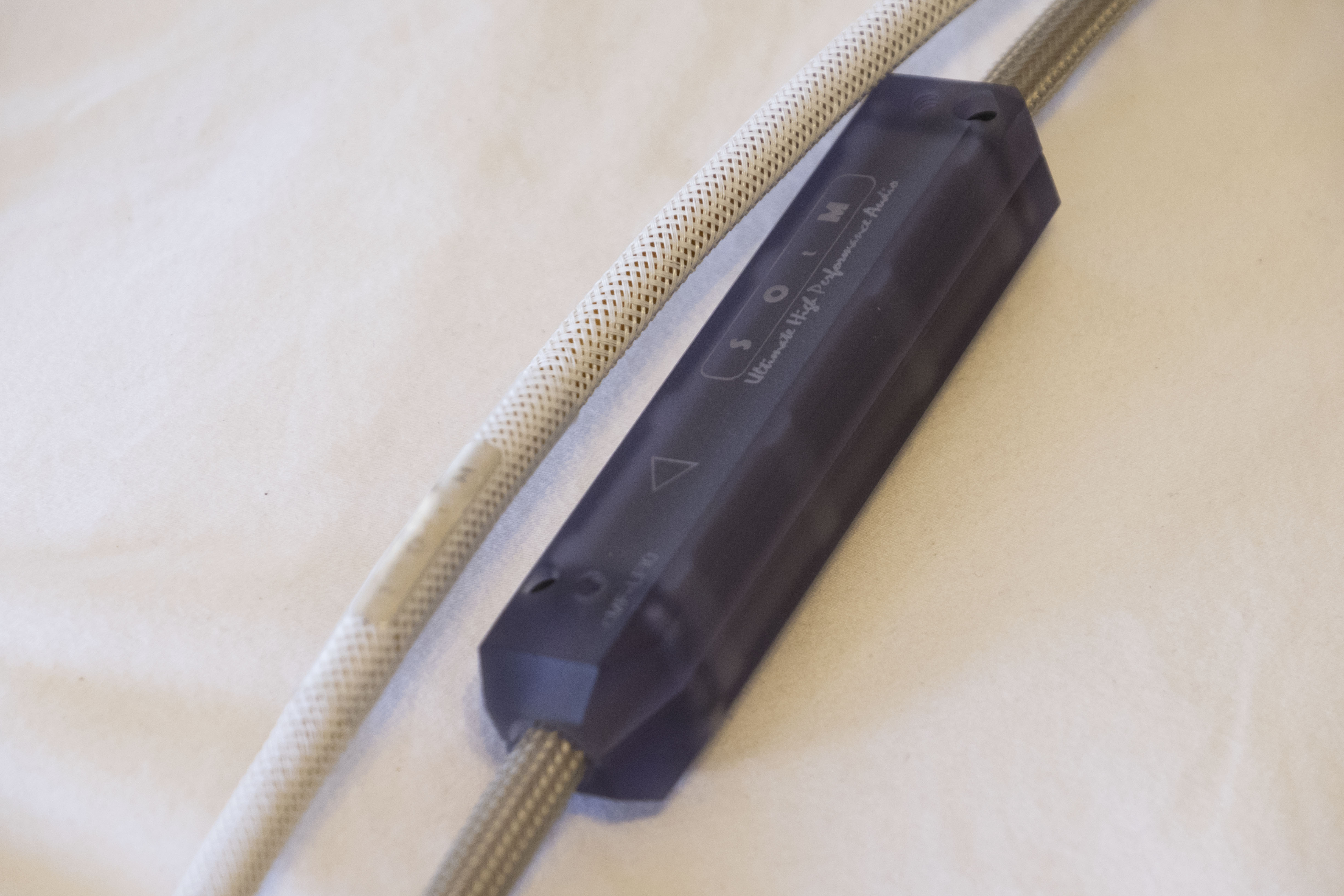

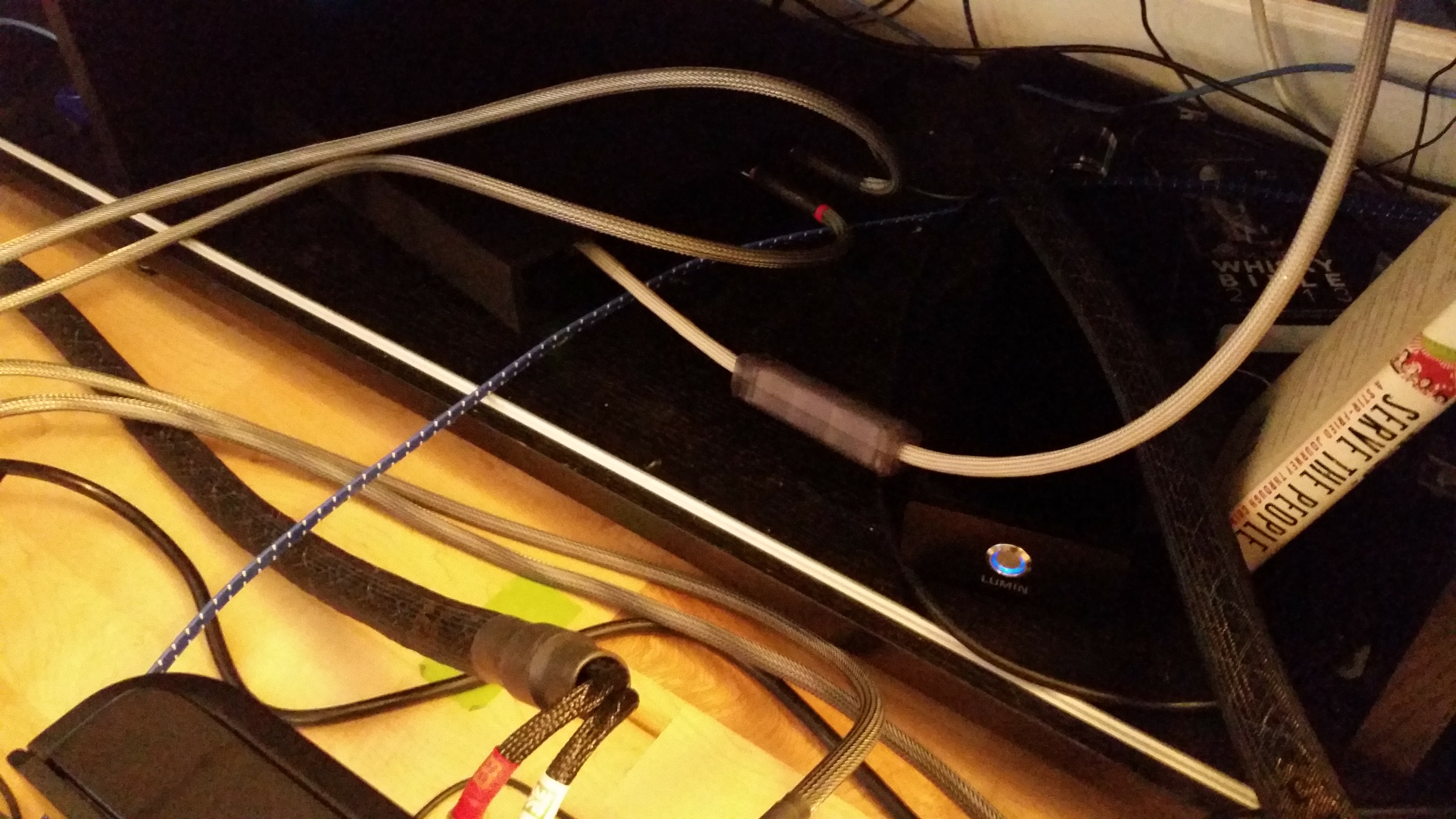
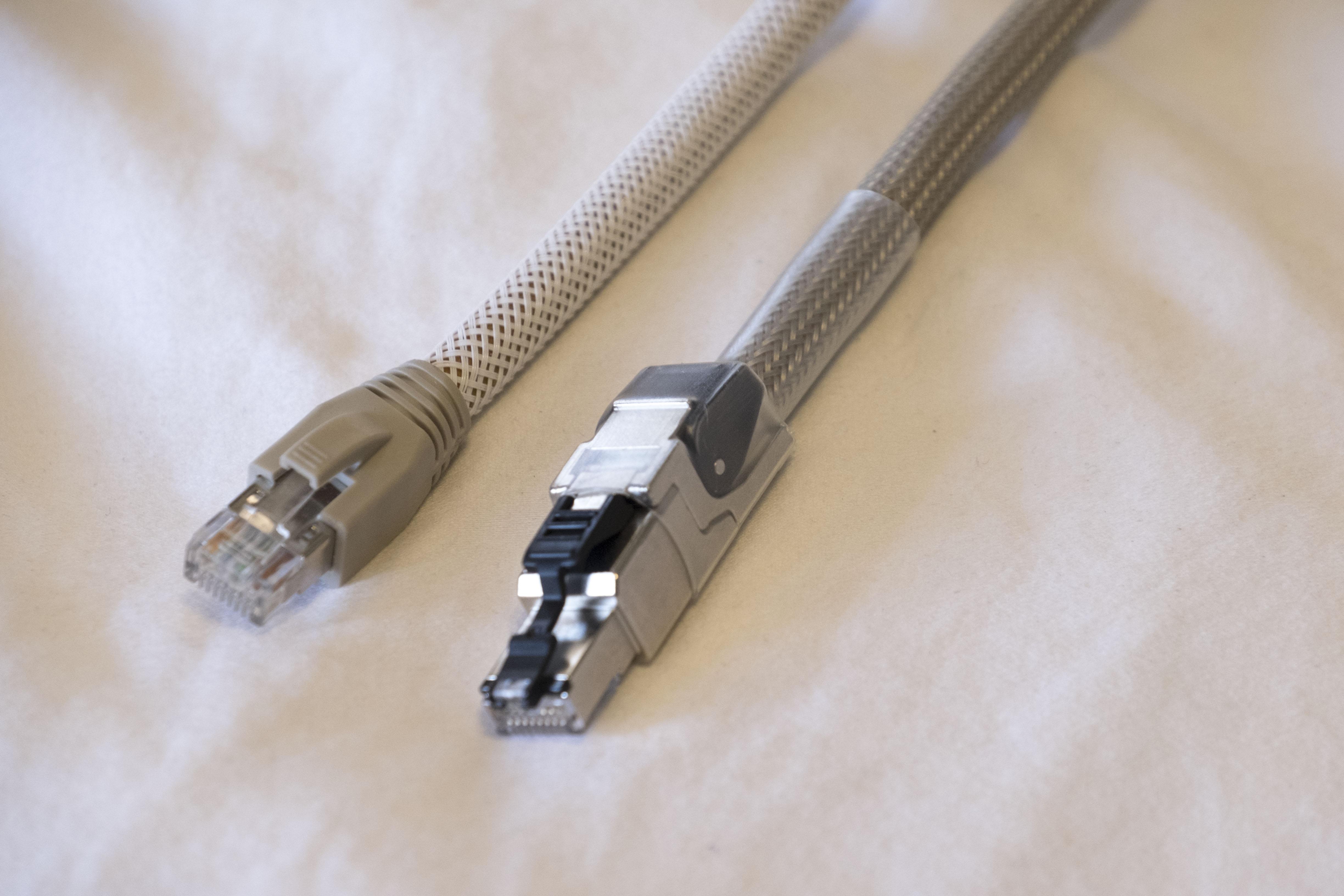
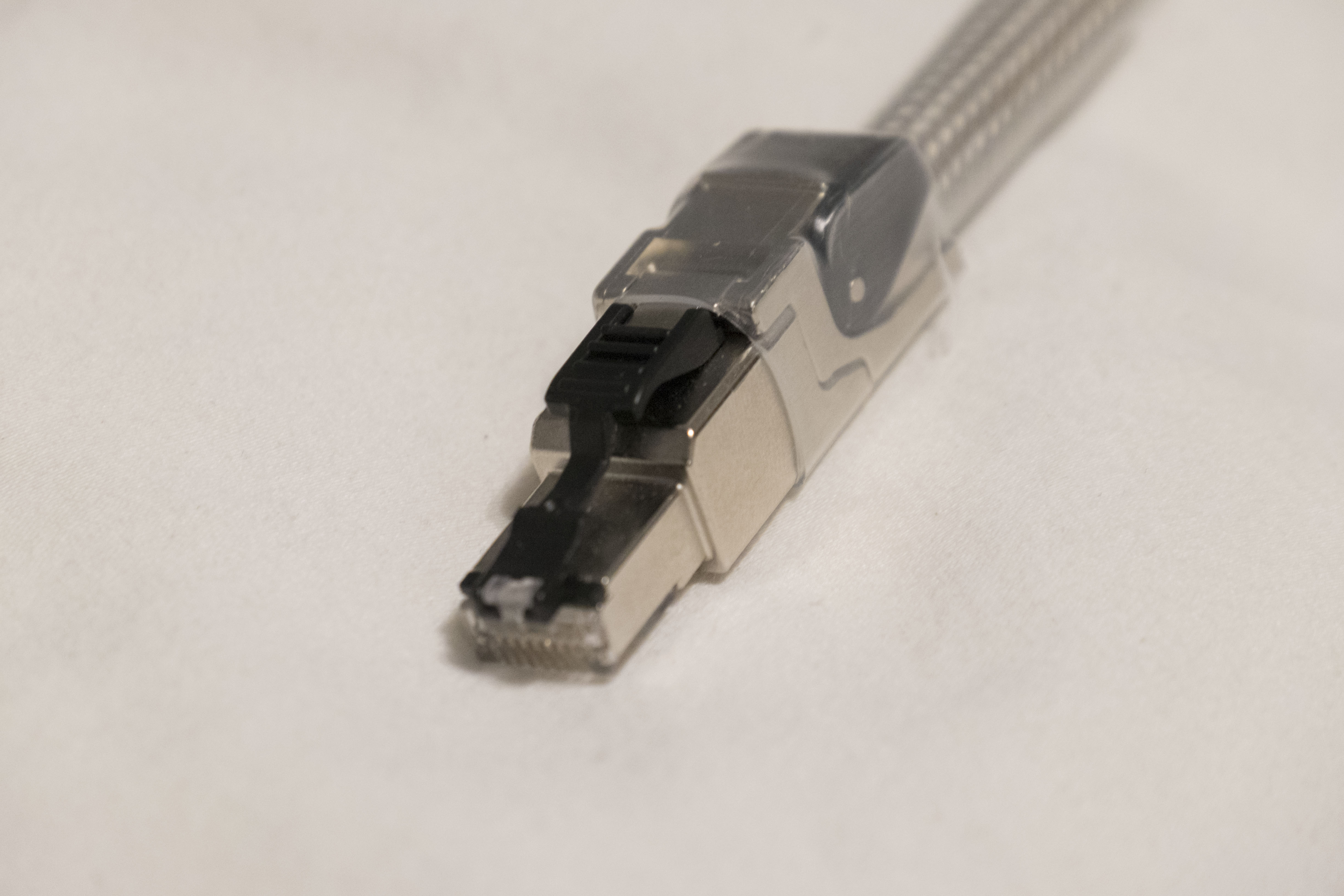


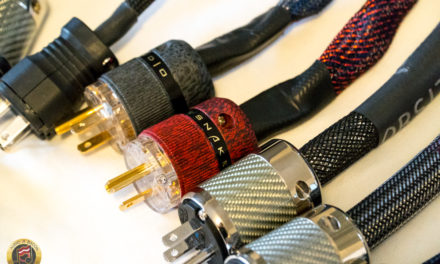
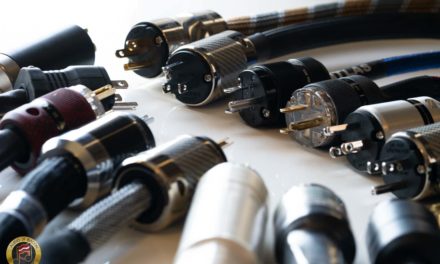
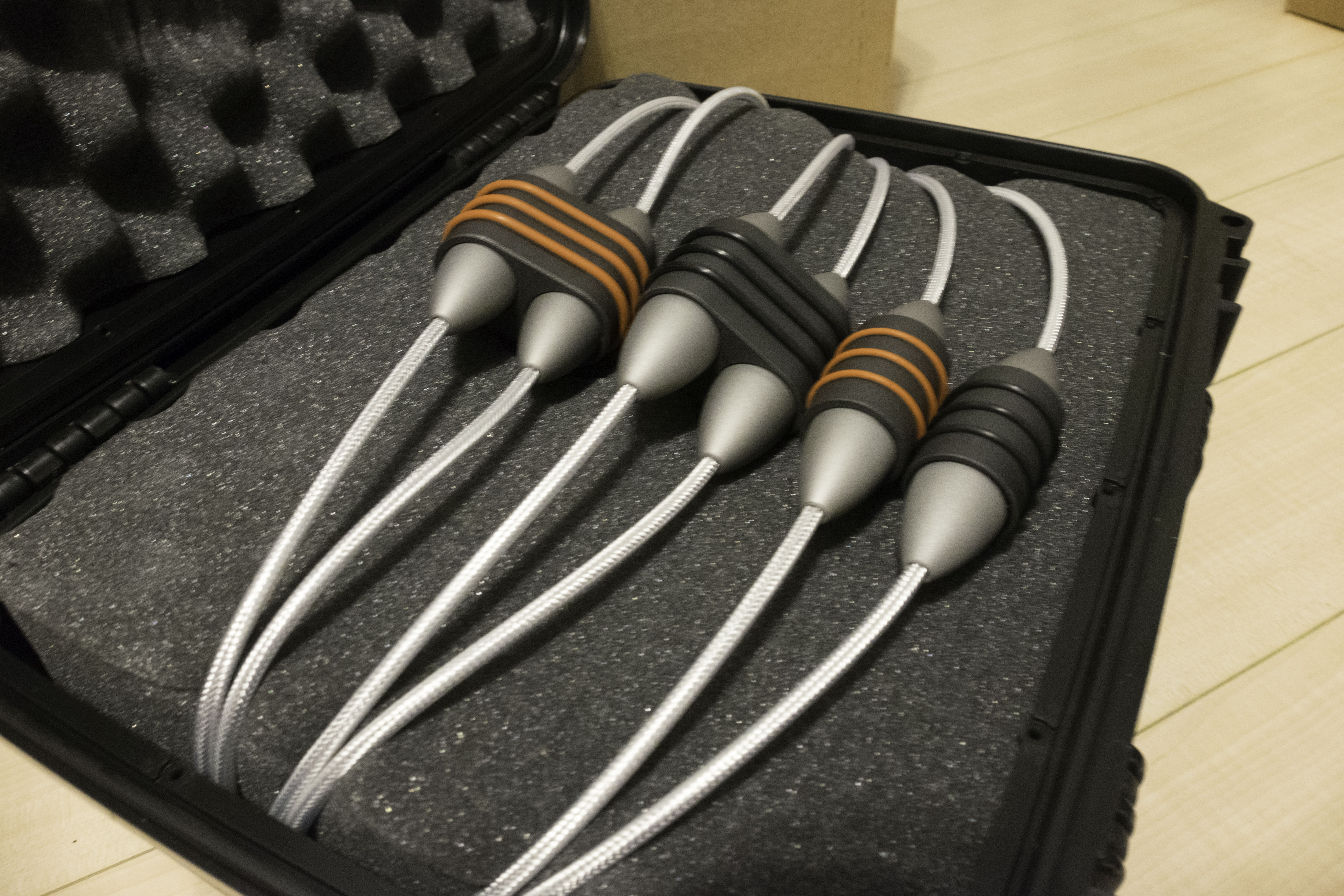


I just purchased a pair of Audioquest Vodka cables to go along with my new PS Audio Direcstream Jr. So router to PS Audio. I did not realize that I needed another set from my Modem to Router. If the second cable had to a be a cheaper one (say Audioquest Cinnamon), where would you put the better cable?
I forgot to mention my use case. My desktop computer is wirelessly networked to my modem. I will play a mix of local files on my computer via roon, and stream spotify since the PS Audio is spotify connect enabled and roon endpoint.
Thanks!
Shahram
You’ll want to put your best cable feeding to your streamer (the PS Audio Directstream in this case), The cable from the Modem to the Router will help with streaming more so than local files, but also just a bit with local files in terms of isolating noise.
Lol, this is the dumbest thing I ever read. Ethernet is a digital connection. There is zero difference as long as the cable can support the bandwidth to sustain the bit rate, which cat3 can do even for FLAC audio if using ADSL in LAN setting.
Source: I am an IT infrastructure architect for a fortune 500 company.
So, you claim that all LAN cables should sound the same?
LAN cables simply DO NOT sound 🙂
HAHAHA! Love it. Now is a good time to read up about how TCP/IP actually works. Of course a bad connection may lead to packet loss and less throughput, but there is absolutely no way that rf can affect sound in the way desribed in the review. Binary data is binary data, be it a recipe for spongecake, pictures of cats or Prokofiev.
Amusing read though, but maybe not in the way the author intended 😉
https://en.wikipedia.org/wiki/Internet_protocol_suite
Just when I didnt think there could be anything more ridiculous than the dorks hawking $500 HDMI cables because they have “less loss” (and about $475 worth of markup) you give us this. Seriously,if you take the blind Pepsi challenge with a $3 monoprice cable and one of these, I guarantee you will feel really stupid.
theorists love to knock anything that does not follow the mathemetical logic so religiously lived by. big numbers small world friends. open the curtains and let happen what is out there. with equal disdain there is a small surface of common ground found in aversion of audio companies ludicrous pricing.
namaste
This both hurt to read and was halarious. Hurt to read because I love music and true sound reproduction and clean sound and halarious because there was no connection to reality in any real sense other than purly anecdotal assumptions. Which is insane as computer science is clearly documented in lamens terms all over the internet.
First, you HAVE to know about digital signals. There’s two forms to pass data through Ethernet cable, TCP and UDP. TCP ensures data will be received and simply won’t work if the data doesn’t get across 100%.. NOT 99.99999999%.. 100%. UDP is when speed is more important than data integrity, and generally isn’t used because TCP at 10/100Mbps with a bad connection would still diliver far more than enough packets to prevent most anyone from even noticing a reduction in bandwidth. In case you wonder how much bandwidth is needed for 192/24-bit audio stream, it’s 9216 Kbps. Further context, 10Mbps is 10X what is needed to diliver data to feed the audio stream. If UDP is being used, there’s some seriously jackass shit going on. Even then, I’ve played around long enough to know that a good CAT5e connection with a UDP stream on a short run doesn’t drop any bits between two good NIC’s at 100Mbps and even 1000Mbps/Gigabit speed. I do that to test connection quality all the time.
Furthermore the placebo/nocebo effect is VERY real and is extremely well documented in countless study’s. And so is are constructed memory’s, which is why witness testimony in court is the worst form of evidence. So it can be very really that someone is “experiencing” audio quality changes to there reality. I 100% know that I’ve done that, and can only just always be wary of my own experiences. Then there’s biological fedelity, just like your eyes focus so does your perception of audio and every other sense to compound onto placebo/nocebo effect.
How much do the cable companies pay you to spout this garbage?
Did your electrical engineering degree fall out of a Cracker Jack box?
Unless you have heard the cables, suggest u STFU.
Jay showed tremendous restraint by not responding to the skeptics on this piece.
I upgraded from a cheap generic ethernet cable to a Total Dac cable, and the difference was immediately obvious.
Well – what can I say. An ethernet cable is meant to carry a square wave – represented in an analog signal across the wire. What I never accounted for is Cross Talk that an Access Point or other wifi devices bring.
I bought a 6A ethernet cable from BlueJeans….changed it to a ribbon like cable that came free with netgears orbi. The swap blew me away…it was insane.
So everything Jay said and his restraint indeed has been remarkable. The only thing that matters is “listen” – if you are blown away and can afford it, BUY IT, if not look for the next value buy.
Great stuff Jay.
Thank you, Sid. I’m still exploring a few things, including wireless bridges. “Everything matters” in this hobby. That’s for sure.
I appreciate your reviews of cables and cords too. The naysayers and data theorists are indeed losing out. I for one have we t through probably two dozen varied ethernet cords with most being generic off the shelf. I found CAT7A cords to be the best so far. Yes they all sound different.
I can attest you have great discernment with your ears. Your Iconoclast comparison article provided accurate description of interconnects and speaker cables with differing copper. I had done equivalent trials before you went to print. Your observations affirmed mine.
I might suggest you try a HDMI cable comparison with an i2s audiofile DAC. I would be interested in the results.
I would also like to see you branch out and trial some Inakustik Referenz cables. I really like their USB cable. They do HDMI, ethernet, speaker, power cables and power conditioners. They too are vibrant and natural tone and timbre at least in their digital offerings. Not much to be found review wise in english. They do have a few auS importers. It would be interesting where they fell into relative to you other cable experiences. Your are one of the few I trust to be objective and spot on.
Thank you for your thoughtful and inspiring comments. Do you mean all CAT7A cables (as a baseline will) sound better than CAT6a and below? Which Ethernet cable is your current reference?
I do want to explore HDMI cables soon – mostly for home theater. I doubt it would affect picture quality but I’m pretty sure it’ll change the sound. I’ll contact Inakustik Refrenz today about some speaker and digital cables. Thank you for the recommendation 🙂
I have been using a Certicable CAT 7A it has won out against all others the 5A, 6, 6A. I’m about to try inakustik ethernet. Inakustik also sells reference power cords which have unique spacers separating power cables. They also sell a power conditioner that wins praise Reminds me of the High Fidelity Cables CT-1 you like at a lower price point.
2404 Ref
15 amp
1.0 meter
$2250
2404 Ref
15 amp
1.5 meter
$2500
2404 Ref
15 amp
2.0 meter
$2750
2404 Ref
20 amp
1.0 meter
$2500
2404 Ref
20 amp
1.5 meter
$3000
2404 Ref
20 amp
2.0 meter
$3500
A
Physics is one of my favorite sciences because it requires that the theoretical is confirmed by measurement. In fact, one of the challenges of physics is to devise new measurement tools that will allow the theoretical to be tested. If the theory can’t be confirmed it is revised, discarded or better measuring tools devised.
The human ear may not be a good quantitative measuring tool, but it is an exquisite qualitative measuring tool. As has been said before, if the ear hears a difference and the instruments cannot measure a difference, the wrong thing is being measured. The fact that MANY people hear a difference between ethernet cables means simplistic theories about how data are being transmitted need revision, at least as far as how data transmission affects the sound.
Early in this article it is stated that this is not a bits issue. Of course tcp/ip works.
This is a matter of noise and timing of the bits.
Sure. But the metallurgy seems to impact the analog end of the equipment as well. It doesn’t matter if it’s a digital cable.
> Most streaming occurs with the UDP/IP protocol where bits aren’t error-checked or resent.
Thats completely wrong of course. All UPnP and Roon use TCP streams that are buffered, error-corrected, and re-constructed.
Ethernet cables cannot make a difference.
Your Ethernet cables reviews are totally bogus.
You’re a frickin’ genius!
Hi Jay, I can confirm your review. I exchanged my Audioquest Vodka for the SOTM Cat 7 and the result is quite significant. The sound is more rounded but still with even more detail than with the Vodka, which is no slouch, but it can reproduce sound with a slight harshness, which becomes more evident with certain recordings. Of course all this probably most significantly noticed on a high end system, in my case between my Melco and Auralic Aries G1. After upgrading my amplifiers to separate pre and power amp and adding a room correction system, the soundstage was very much improved ( as it should be), but after some time I started noticing the Vodka effect. I guess each upgrade reveals a weakness in the chain that could not be heard before. So it never ends … but the SOTM Cat7 restored the sound to a more rounded, laid back but stil very detailed and realistic image. Yes very expensive for a cable, but the experience is worth it. Thanks for the review which convinced me to do this.
What about new SOTM DCBL CAT 7U ? That would be something, the test and comparison.
Hi I live in Norway and here to it is many people saying that is not possible that Ethernet cables can do anything for the sound and some of them even get angry when people that experienced better sound with better ethernet cables talking about this in a place called Hifisentralen in Norway. The people that not belive that it is possible to get better sound with better ethernet cables even try to destroy discussions that people have about these cables. Why is some people trying to destroy for other people that love highend sound???
I love the SOTM cables. Having owned several cables, both digital and analog, that Jay has reviewed, I would say that his takes are generally spot on. I particularly appreciate his willingness to compare one cable to another. I hope all of the negativity doesn’t dissuade Jay from reviewing more cables in the future.
Having put on my hip waders and read the comments, I think many armchair engineers forget that a digital signal is just a wide bandwidth analog signal. The implications of that are likely to fall on deaf ears in an Internet comment section, though.
In a world where Hifi cables can push into five figure territory, that pretty most contenders in the Ethernet cable arena fall under $1000, should be considered a blessing.
Please guys. Even if you are right, do try to borrow a good cable for once and try it ou before you judge.
I tried a lot of tweeks, also that has been hailed for years, that had no effect in my opinion. But I definite hear great differences with power cables. Even more so than with interconnects or speaker cables. Never believed there could be a difference until I tried.
I have no idea if a LAN cable makes a difference, but before I will tell others they don’t, I will try them out myself.
I will promote a heap of rocks if they produce superior sounding music, but return a 800 euro usb cable if the difference is not worthe the price difference.
But over time I heard different amazing things that can only be heard to believe.